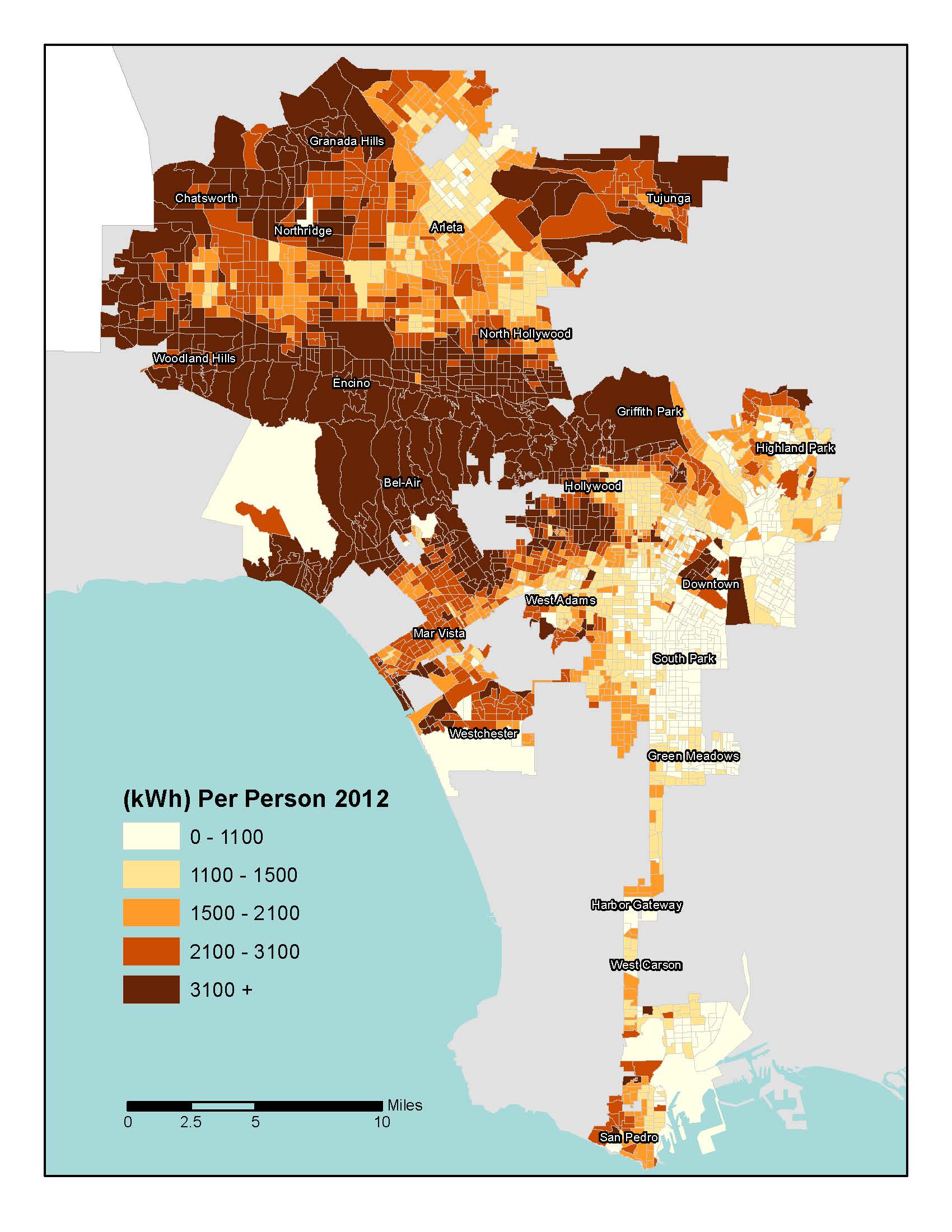Page Description
The following page is a three column layout with a header containing the search CSUN function. Page sections are identified with headers. The footer contains update, contact and emergency information.
USING GIS TO TARGET OUTREACH FOR LADWP CUSTOMER REBATE PROGRAMS
THIS PROJECT
This project is a collaborative effort between California State University, Northridge and the San Fernando Valley Green Team. Using geographical information systems (GIS) and spatial statistical analyses, we examine the participation in various electricity saving programs in Los Angeles Department of Water and Power and their effectiveness.
Resources:
Chapter 1 Introduction

Strategies for reducing traditional fossil fuel energy usage and emissions have become a significant issue for all stakeholders at the local, state, and national levels. Policy makers, utility companies, environmental groups, and individuals all have a stake in reducing traditional energy usage and promoting sustainable energy production. The Los Angeles Department of Water and Power Board of Commissioners have adopted the goal of achieving 10% energy efficiency by 2020.
Substantial funding has been and will continue to be committed to programs designed to reach this goal. These programs have included rebates for residential and commercial users, outreach programs conducted by LADWP, Energy Upgrade California and non-profits, and direct install programs for small business and low income residents. As funding for energy efficiency increases, it is vital to collect and analyze data to assess the participation and effectiveness of programs, their effect on long-term behavior change among users and the distribution of implementation in different areas of the city. Answers to these questions are critical in assisting policy and decision-makers in further improving energy usage efficiency.
The purpose of this project is to provide information to LADWP and its outreach partners to better target activities to inform customers about LADWP energy efficiency rebate programs. In particular, we focus on five primary objectives:
1. Map the geographical coverage of different energy-programs associated with LADWP, using the state of art of technology in Geographical Information Systems (GIS).
2. Analyze changes in energy efficiency before and after the implementation of different programs during the determined period including: energy usage, changes in energy usage, and identifying “hot spots” (most efficient areas) and “cool spots” (least efficient areas).
3. Examine the geographical coverage of the programs, the duration of their champions, the modes of publicity; and comparing the effectiveness of different programs. Further regression analysis were conducted to explain the differences after implementing the various programs. In the end, we also analyzed how the difference in electricity consumption after implementation of such programs among various geographical locations and how such differences can be explained by factors such as income, ethnicity, and property type, among others.
4. Conduct a small sample of surveys and interviews with stakeholders including LADWP officials, residents, and business owners to examine why some programs are more successful than others, based on the following questions: Why have certain individuals altered their energy usage while others have not? Why have some users achieved a higher degree of energy efficiency than others? What kinds of factors might explain such differences? Understanding such questions will help decision makers at LADWP design and implement marketing Strategies and Incentive structures to change people’s energy usage behaviors and improve their energy usage efficiency.
5.Engage local communities and disseminate results of the study. Specifically, we achieve this goal in three major ways. 1) Present results at the Green Building Education Conference (co-sponsored by the CSUN Institute of Sustainability and San Fernando Valley Green Team); 2) conduct presentations to various associations such as the Valley International Trade Association (VITA) and others; and 3) create a website to publicize the different energy efficiency programs and project results.
Examination of such questions will help LADWP decision makers to target outreach efforts and design more effective energy initiatives. Such a project will also be helpful to track the outreach efforts of other LADWP efforts such as water saving initiatives..
Dr. Yifei Sun, Department of Geography, California State University
